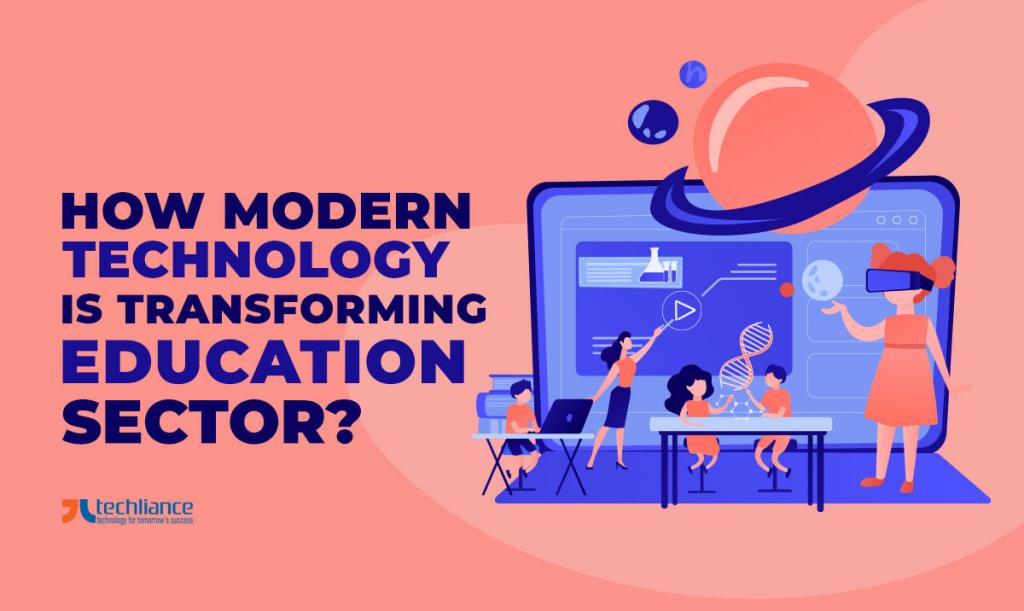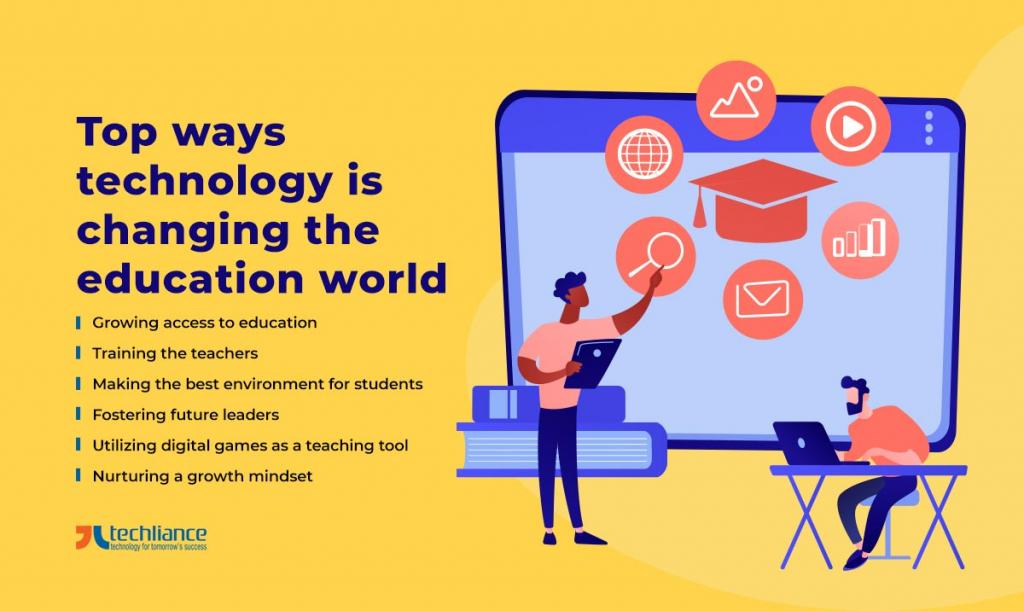Rapid advancements in technology are revolutionizing many industries globally and in the USA. Similarly, modern technology is transforming education and learning landscape through 2024. People are embracing new trends as more and more changes are on the way.
The coronavirus pandemic saw an increasing number of schools leverage the benefits of modern software development in classrooms. Also, it led to an evolution in teachers’ approaches to coursework. Subsequently, it boosted the facilitation of access to knowledge for all.
Today, educational institutions must develop robust curricula designed to prepare future leaders. Breakthroughs in technology can play a pivotal role in addressing the challenges of modern education systems. Expert dedicated programmers can enable training institutes in keeping up with the revolutionary pace of ever-changing new technologies.

Top ways technology is changing the education world
Here are some key areas where cutting-edge technology is transforming education sector for the better in 2024.
- Growing access to education
- Training the teachers
- Making the best environment for students
- Fostering future leaders
- Utilizing digital games as a teaching tool
- Nurturing a growth mindset
Next, take a look at our selection of the best ways technology is transforming education and learning.
Growing access to education
Historically, students’ educational opportunities have been constrained by the resources available within a school’s walls. Thanks to technology-enabled learning, students may now access resources and expertise from anywhere in the world. For example, students interested in learning computer science can take a plethora of courses online.
They can get it with as little as high-speed internet access (and often completely free of charge). Especially, this is beneficial if they are not able to study in person the subject at a university. The reason behind this deficiency can be that the institution lacks the necessary resources to teach that course.
Students in remote geographic areas can now collaborate with peers from worldwide and in the United States. All thanks to the help of online collaboration platforms like Slack. Those looking to improve their writing skills can order online professional writing support from reputable firms like Grab My Essay. which can often provide far more valuable assistance than many teachers around the world.
This presents a significant challenge to universities, which must adapt to an ever-changing technological environment. They must support their students’ needs and prepare them to be active participants in our globalized world. For instance, schools with short science resources can provide their students with virtual chemistry and physics labs.
Training the teachers
Rapid advances in technology benefit not only students but also educators. Presently, it is critical for any institution to ensure that all teachers understand and employ the best technologies. Students together with their teachers can become the catalysts of change.
This goal will not be met unless teachers adapt to technology-based learning themselves. A smooth transition to technology-driven learning requires rethinking instructional approaches and techniques. So, educational institutes must invest in more teacher-preparation resources.
These processes should base on a thorough understanding of educators’ roles in today’s increasingly digital world. Also, teachers can use videoconferencing tools and a wealth of social media websites. It empowers them to get in touch with other learning experts and educators internationally.

Making the best environment for students
When creating the best environment for today’s students, educators should consider the following questions.
- Does the curriculum cultivate skills that will not get obsolete soon and will help future business leaders?
- Is the physical space’s design and layout dynamic and adaptable enough to accommodate technology-powered learning?
- If not, what digital alternatives does the institution provide for facilitating both individual and collaborative work?
- Is the curriculum taking into account the students’ need to adapt to our overtly digitized world?
- Does the curriculum consider students’ need to provide for themselves in the future?
If universities fail to address such issues, an increasing number of students will, understandably, opt for self-education. Why spend four years at a university that will not prepare them for life? Whereas, they can educate themselves through the limitless opportunities provided by technology in today’s world.
Fostering future leaders
Software engineers and tech experts are among the highest-paid specialists on the planet. They are sought after by technology companies and any corporation that manages information systems. As a result, a rising number of colleges are offering software development and other IT courses.
The goal is to make studying this complex craft rather easy to teach and learn. Accordingly, educators must broaden their perspectives and ensure better learning environments for their students. This craft is essentially working as the primary instrument for nurturing future industry leaders.
Universities are adapting to the core academic competencies. Also, there is a promising body of research on the importance of fostering non-cognitive skills for improved academic success. Non-cognitive competencies include developing self-awareness, executive function, teamwork, and concern for oneself and others.
Utilizing digital games as a teaching tool
Evolving from means of entertainment, games are emerging as yet another powerful learning tool. Many educational institutions are using digital games enabled by software development to meet specific learning objectives. Ample evidence suggests that virtual games can assist students in improving their self-awareness, social awareness, cooperation, and problem-solving skills.
Games such as Ripple Effects assess the social skills of technology-savvy students. So, they provide personalized skill-building games for modern-day students. They work to sort challenging behaviors using storytelling, virtual environments, and interactive experiences.
Strategy or puzzle games can improve the thinking, reasoning, and decision-making abilities of students. Progressively colleges are opting for virtual games to address underlying issues that students face. With advancements like AR/VR, Metaverse, and web 3; many more will do so in the future.
Nurturing a growth mindset
A growth mindset refers to the belief that you can develop abilities through hard work and practice. Modern trailblazing technology allows everyone to master any desirable skill and create something out of thin air. Thus, an increasing number of students adopt a growth mindset and aspire to be masters of their own lives.
To support students on this journey, universities can encourage students to foster their social selves. Perhaps, students can submit their research papers on an educational website, technology forum, or an online blog. There they can receive feedback from not just their professors, but from people all over the world.

Wrapping up
Advances in technology can significantly aid in accelerating and disseminating the impact of powerful learning principles. Hence, it is more important than ever for universities to implement the best technology practices available. They must guide students through core competencies for using technology in meaningful ways.
Educators are adapting to the digital world by allowing students to choose from a wealth of learning experiences. For example, building websites, authoring online blogs, making films, and playing interactive games. Consequently, they can benefit from expert advice from across the world.
Technology is transforming education and training sector for the better. Advances in software development are shaping the learning experience. Therefore, these advancements will continue to spread knowledge in the future.




